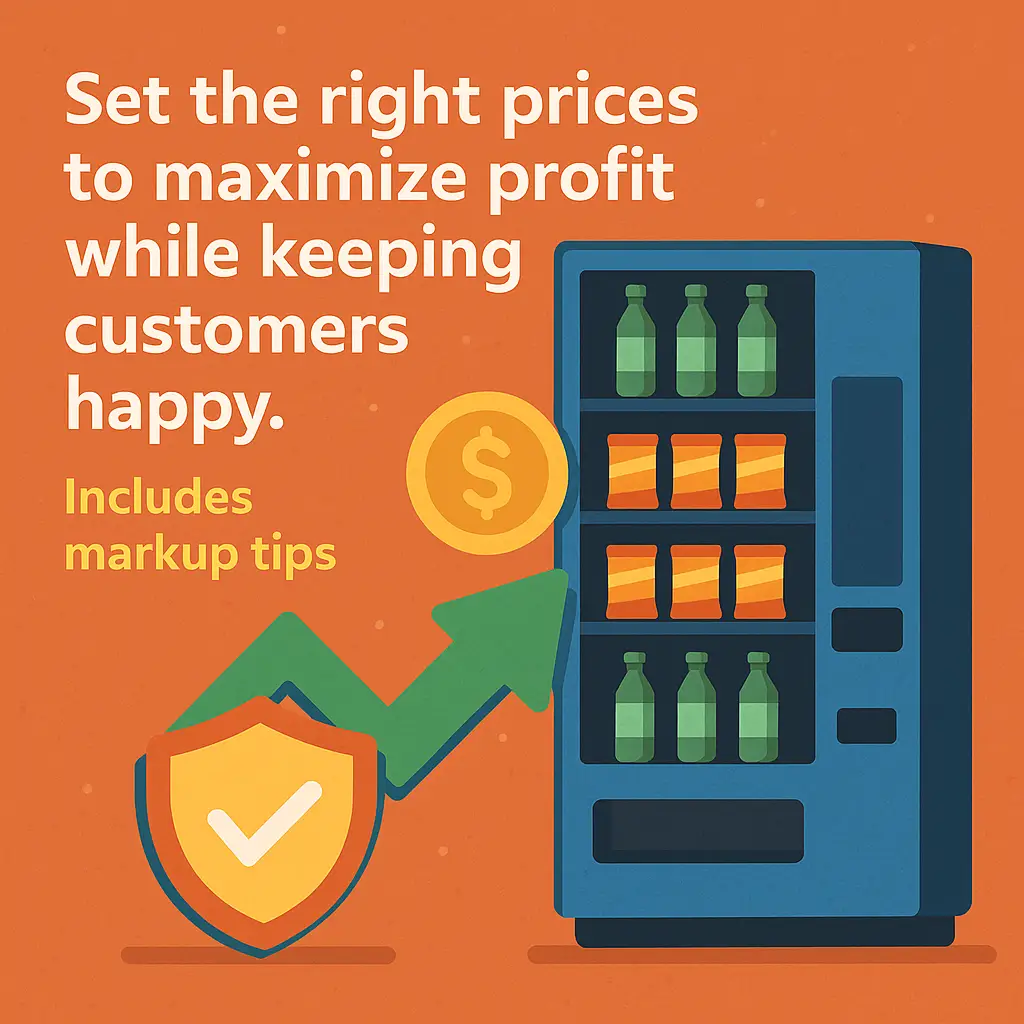How to Price Items in Your Vending Machine
Set the right prices to maximize profit while keeping customers happy. Includes markup tips.
Back to Vending Business Startup ResourcesSet the right prices to maximize profit while keeping customers happy. Includes markup tips.
Back to Vending Business Startup ResourcesStart your 30-day free trial and get instant SMS and email alerts whenever a local business needs vending service. These are real location leads to help you grow your route — you decide which ones to buy, no obligations or contracts.
![]() Markup should reflect both cost and local expectations
Markup should reflect both cost and local expectations
![]() Pricing can vary by location and customer type
Pricing can vary by location and customer type
![]() Regular price reviews help track profitability and demand
Regular price reviews help track profitability and demand
30 days free, then $39 / month.
No Commitment. Cancel Anytime.

Setting the right price in your vending machine involves more strategy than simply doubling the wholesale cost. Successful pricing balances customer satisfaction, competition, and profitability. Start by calculating your total cost per item—this includes the purchase price, taxes, and any delivery or handling fees. Then apply a reasonable markup, usually between 50% and 100%, depending on product type and location.
Location plays a key role. High-traffic areas like schools or apartment complexes may support higher prices, while competitive office parks may require a more careful approach. Research nearby machines and map your pricing accordingly. Also, consider your audience. Health-conscious customers may accept higher prices for better-for-you items, whereas impulse snackers are more sensitive to cost.
Price rounding matters, too. Most customers prefer seeing prices ending in .00 or .50 rather than unusual decimals like .67. Clean numbers improve user confidence and increase the likelihood of a sale. Since many modern vending machines use contactless payment, you're not restricted by coin amounts—but psychological pricing still matters.
Another factor is expiration risk. Items with short shelf lives, like sandwiches or refrigerated meals, carry more waste potential, so they may need a slightly higher margin to compensate. Conversely, long-lasting snacks and drinks offer stable profit over time, allowing you to stay competitive.
Adjusting prices isn’t a one-time decision. Track sales data and customer feedback regularly. If a product isn't moving at a profitable price, try lowering it slightly or swapping it out altogether. Review pricing at least quarterly or whenever product costs shift. Smart vending tech and some AI coolers allow remote pricing changes, making updates more efficient.
For guidance on selecting good locations that influence pricing power, read our article on top vending machine placement strategies. Also, if you're new to getting businesses on board, our guide on how to approach business owners about vending can be a helpful resource.
Vending Exchange connects vending operators with real businesses actively looking for vending services—including traditional machines, AI coolers, and office coffee. Get instant SMS and email alerts when new opportunities are available in your area. No contracts or monthly fees—just buy the leads you want. Start your free 30-day trial today and grow your vending business on your terms.
A markup of 50% to 100% is common, depending on item type and location.
Monitor local competitors and price slightly below or match their set prices to stay competitive.
Yes, busier or isolated locations can support higher prices due to convenience.
Health-focused customers are often willing to pay more for quality or organic options.
Quarterly reviews are a good rule of thumb, or anytime product costs significantly change.
Try reducing the price slightly or swap it out for a different product with better demand.
Perishables may need slightly higher margins to offset spoilage risk compared to shelf-stable goods.
You’re not limited by coin denominations, so you can use more flexible and precise price points.
Smart vending platforms and remote software can assist with pricing analysis and adjustments.
Yes, prices ending in .00 or .50 are easier for customers to process, improving buying decisions.